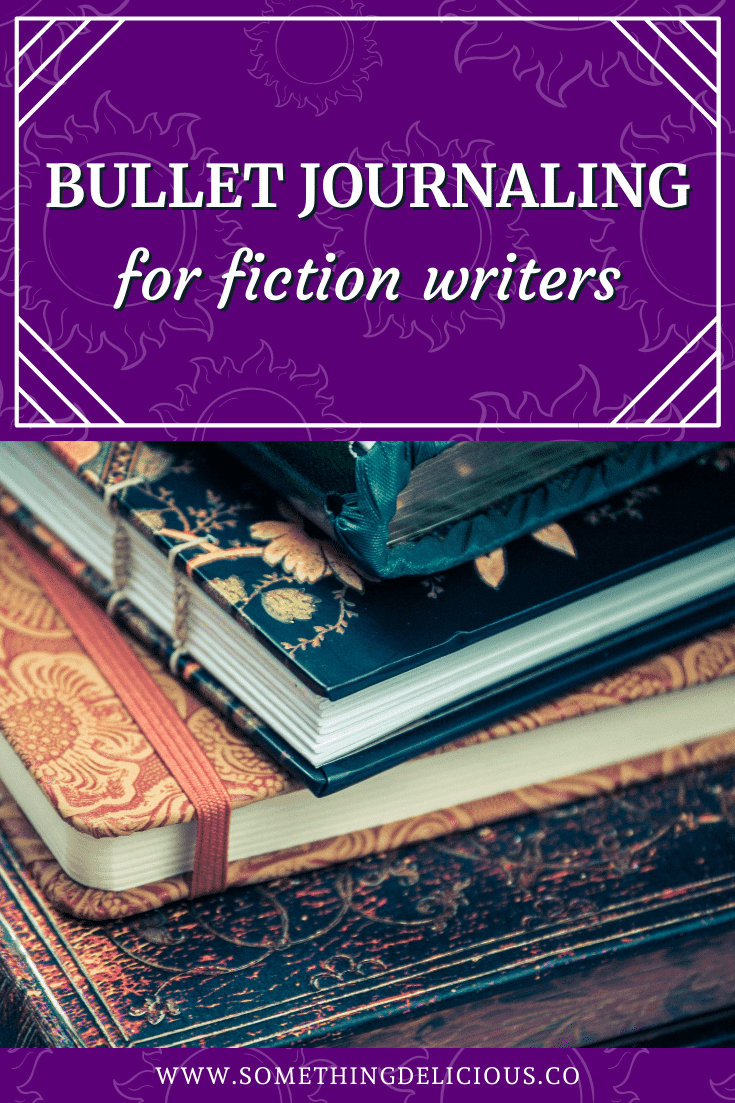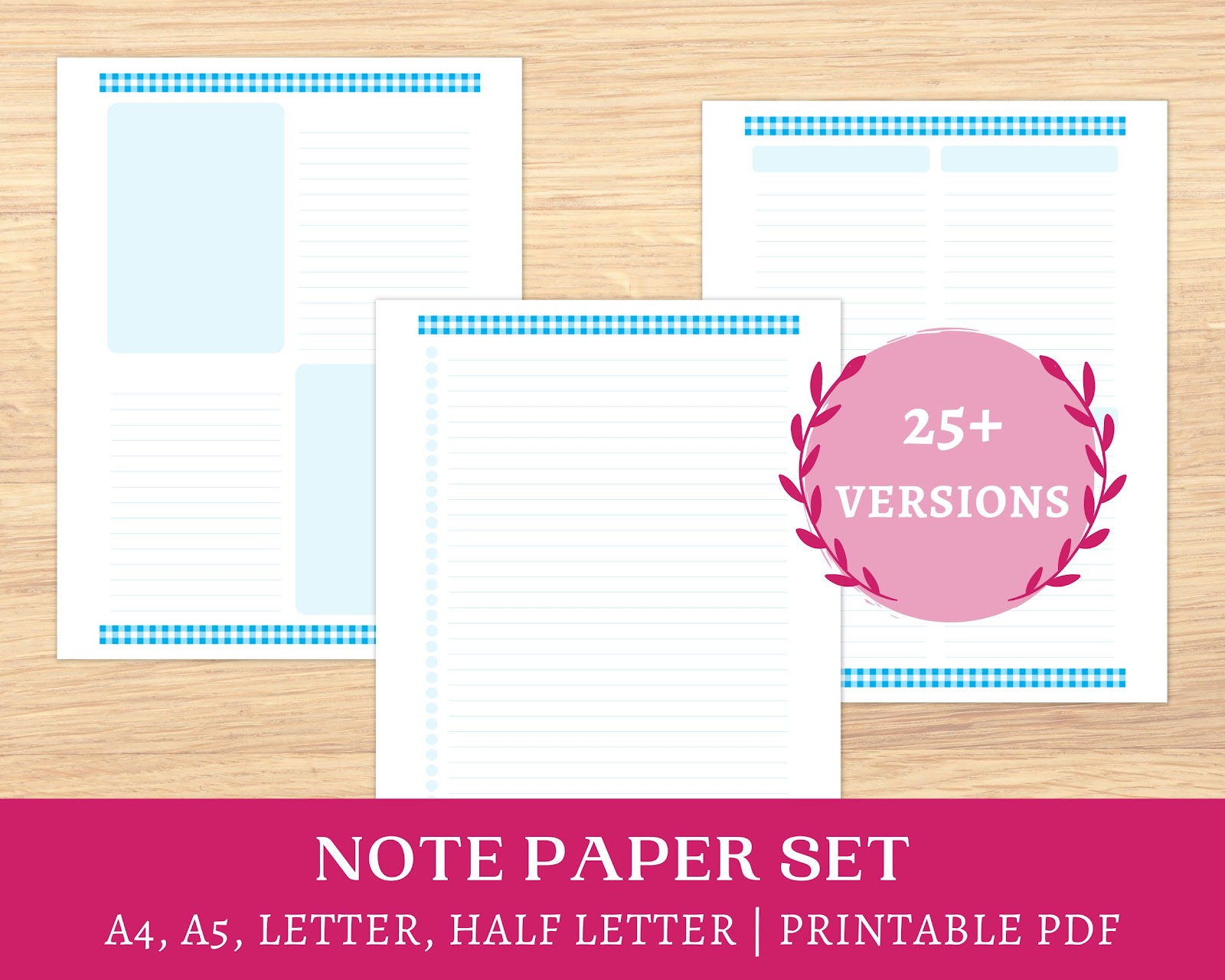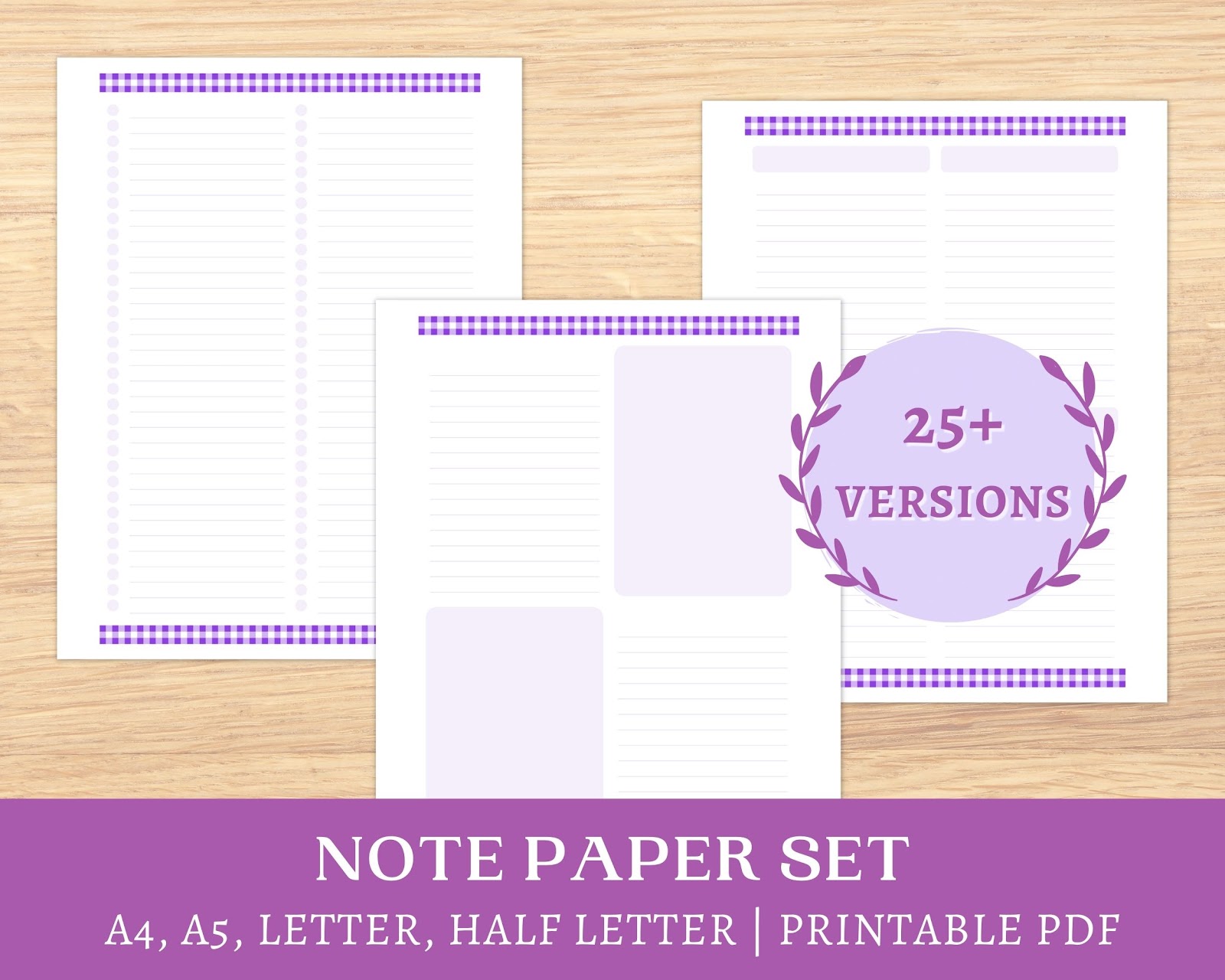
Picture this: a magical notebook that collects your lists of character names, rough draft progress meters, and memorable feedback from readers all in one place. Imagine being able to organize it and add new things as you go, without needing to allocate perfectly spaced sections ahead of time. There’s even a special page that helps you find whatever you’re looking for in seconds.
This, my writerly friend, is the magic of a bullet journal.
What is a bullet journal?
While Ryder Carroll's version of the bullet journalling system is the most widely known, it's been around in some form or another for decades. Bullet journals are a versatile way to simplify your life and keep all your to-dos, lists, and future planning in one spot.
Once you have the basics sorted, it’s incredibly easy to customize to your tastes. Pinterest and YouTube abound with suggestions and tutorials to help you make it your own.
If you haven’t encountered bullet journaling before, start with these articles to give you a sense of the basics. After that, make sure to return here to discover how you can use this magical notebook when you’re writing a novel!
Already know the basics? Click here to skip to specific tips about bullet journaling for writers!
Getting Started With Bullet Journaling
An In-Depth Guide to Bullet Journaling, from GenTwenty: A basic overview of bullet journaling by yours truly.
Thorough Guide to the Bullet Journal System, from Tiny Ray of Sunshine: This is incredibly comprehensive and helpful, but if it starts to feel overwhelming, scroll down to the bottom of her post where Kim has an infographic summarizing her main points!
Bullet Journal - Daily Planning, a video from Boho Berry: I’ve watched a lot of videos and read a lot of posts about daily planning in bullet journals, but this one still tops my list as one of the most helpful resources out there, especially for something you’ll be doing a lot.
There are a few other things to wrap your brain around to make your bullet journaling experience as smooth as possible, like migration and threading. If this is all new to you, do yourself a favour and come back to those after you’ve read the rest of this post and decided if bullet journaling seems like a good fit. That way you’ll better be able to visualize how these concepts work.
What you need to start your bullet journal
A blank notebook. Some people love the Leuchtturm1917, which is the original Bullet Journal. Others, like myself, love a good ol’ Moleskine notebook. My personal favourite is 5 x 8.25 inches with the dot grid. It’s light, holds up well to repeated use, has heavier-than-average paper, and it’s beautiful. However, you can use any notebook for this, especially if you’re just starting out and aren’t sure whether bullet journalling is right for you. You can even use the bullet journal system with a binder and A4 or US Letter paper.
A neutral pen. Pick one that doesn’t bleed too much, so you can use both sides of the page without issue. I’m currently using the same pens I use for just about everything (BIC Ultra Round Stic Grip) because they’re super comfy and work well.
Washi tape and/or coloured pencils or pens. Optional, but fun for decorating your pages with ease and creating colour-coded charts! I've started using Staedtler Triplus Fineliner pens after receiving them for Christmas and am completely in love. They barely show through the page, even when I'm colouring in little boxes or bars on a graph or chart, and they write beautifully.
If you'd like to try creating a writing binder or notebook from scratch rather than buying one, you might enjoy blank printable pages! The ones shown below offer a number of different layouts, so they're perfect for all sorts of collections, lists, and notes for your writing, and they're available in a number of lovely colours.
What if I already have a bullet journal?
If you already have a bullet journal, the choice is yours as to whether you use the same notebook for your writing tidbits or keep them separate. At the rate mine fills up, I’d be starting new notebooks all the time if I kept writing-related notes in my regular bullet journal. Unless you just write every once in a while, chances are you’ll be happier having a dedicated bullet journal for your writing.
Can I use one bullet journal for all my writing projects?
Of course! That being said, if you’re writing an epic fantasy novel with characters and settings and ideas coming out the wazoo, you might want to give that one a journal of its very own. If you’re not sure, start with one and see how it goes!
Would a bullet journal for writing still have a spot for daily and monthly planning? A key? An index?
Short answer: Yes!
Long answer: Let’s take this one by one …
Daily Planning
This isn’t a must-have, especially if you’re only working on one project and/or not on a daily basis. You could keep a weekly planner, instead. Whether you choose to jot down tasks on a daily or weekly basis, though, you could include things like:
- how many words you plan to write
- a research question to follow up on and how you’ll be doing that
- a writing date at Starbucks with a friend
- finishing an assignment from the writing class you’re taking
- reading a how-to book on amping up your writing skills
Monthly Planning
Already have standing writing dates scheduled into your planner? You could skip this step or start keeping them in your bullet journal instead. Giving your writing dates their own calendar can make them feel like more of a priority. There's also more room to jot down details about what you’ll be doing during those writing sessions, too, like "incorporate more sensory details into Chapter 5."
A Key
The key is one of the most helpful components, and it's easily customized for different uses. Use it as a form of shorthand to draw attention quickly to what you need to know on any given page.
Having a key for your bullet journal will help you differentiate at a glance between things that need doing, to-dos that are half-finished, things you want to remember or look up, and anything else you happen to put in your bullet journal. I keep my key on a sticky note inside the front cover; that way, if I want to change the symbols down the road, I can easily swap in a new key.
It's important for the visual elements of a key to be uncomplicated and easy to understand. They could involve actual symbols, utilize colour-coding, or incorporate patterns or small stickers.
For symbols, keep things simple – think geometric shapes, like squares, triangles, circles, and octagons, or other quick doodles, like asterisks, stars, spirals, and exclamation points.
With simplicity in mind, don't be afraid to get a little creative! If one of your characters feels an affinity to flowers, signify that WIP with a simple daisy. If you have both a romance and a thriller on the go, use a heart for one and an exclamation point for the other.
Other symbol possibilities include:
- envelope
- cloud
- dollar sign (euro, etc)
- magnifying glass
- puzzle piece(s)
- planet
- infinity sign
- musical note
- push pin
- paperclip
- leaf
- flame
- four-leaf clover
- anchor
- sun
- crescent moon
- pawprint
The original concept of a bullet journal key includes symbols for things like tasks, events, appointments, ideas, urgent, and so on. A key more specific to a writing notebook could revolve around:
- a specific story, with symbols for
- plot
- setting
- character
- dialogue
- draft portions
- to investigate
- writing in general, with symbols for
- individual works-in-progress
- revise later
- happy/inspiring
- helpful tips
- research
- deadlines/important dates
- research, with symbols for
- interviews
- primary sources
- secondary sources
- questions
- details
- broad concepts
An Index
An index is essential: without that, you just have a notebook with a jumble of notes.
Create an index, update it whenever you add something new or continue a collection on a different page, and you’ll make things so much easier for yourself in the future. 😊
What’s a collection?
A collection is a convenient way to gather ideas, notes, and/or lists on specific topics in one spot. In my everyday bullet journal, I have collections for everything from soon-to-be-released movies on my radar to sewing tips I glean from YouTube videos.
The best thing about collections is you don’t have to allocate a certain number of pages for them from the get-go, so they can be as lengthy or petite as you need them to be! Once one page fills up, simply flip to the next blank page, whether that’s right after or thirty pages later, and carry on with your collection. Be sure to add it to your index while you’re at it.
You might also want to consider threading, a quick extra step that makes your collections even easier to navigate.
What collections could I create for a writing bullet journal?
For specific works-in-progress, I’d include collections for:
- Main characters ( start by giving them each their own collection page): include their name, background, important relationships, and any other pertinent information, such as their motivation and how they evolve as the story unfolds
- Supporting characters: you could have these all in the same collection or give them each their own collection page, depending on how much detail you have for them
- Reference list of characters: this could just be their names, or you could also include when they make their first appearance
- Reference list of settings
- Scene ideas
- Dialogue ideas
- Research questions
- Books, websites, and other resources for future research
- Title ideas
- Progress meters for word count/chapter count, for rough drafts and/or revisions
- Chapter-by-chapter charts to show how often you use different settings or weather patterns
- Genre study: things to avoid, fun tropes, genre conventions to embrace
As far as general writing collections, I’d go for:
- Favourite writing prompts, so you’re never without inspiration and writer’s block busters
- Plot bunnies that won’t leave you alone
- How-to books to read about writing
- Symbolism: for each symbolic concept that intrigues you, write down different interpretations; meaning to you & others; related symbolism, contrary symbolism; creative examples of this symbolism in novels, games, movies, etc.
- Dialogue: idioms and colloquialisms; quotes from fictional stories; quotes from interviews & nonfiction sources; phrases and words you use constantly, and some fresh synonyms for each; historical variants
Don’t forget about the “peripherally related to writing” collections:
- Literary agents to query
- Publishing houses to query
- Other writing or publishing professionals (editors, coaches, proofreaders, publicists, cover designers)
- Submissions chart
- Blog tour stops
- Chart to track sales
- Happy Moments log (positive snippets from reviews, fan letters, beta readers, Twitter friends)
- Promotion ideas
- Habit trackers (wonderful for establishing a consistent writing practice or making sure you spend a little time each day doing research, for example)
When wouldn’t you use a bullet journal for novel writing?
For me, having a bullet journal, especially for my writing, is about having all the information I need at my fingertips, without having to search through a thousand bits and pieces of paper and text messages and emails and computer files to get it. It’s not a space for scene drafts, heavy brainstorming sessions, and things that go all over the map.
That being said, this is your bullet journal. If you want to use it for brainstorming and drafting your novel, go for it! Just remember it’ll fill up a lot faster if you do this. Finding what you need when you need it should still be just as simple, so long as you’re keeping up with your index and numbering those pages.
Are you craving an electronic system instead? You might prefer the one I created in Microsoft Word! Visit this post to see the organization overhaul that has me head over heels in love.
What about your research?
This really depends how extensive your research will be. If you’ll only have a few pages worth, it could totally go in the same bullet journal as all your other writing material. Otherwise, you’ll likely want to keep it separate; just keep track in your bullet journal of what research you’ve done and what still needs doing, and keep the piles of paper and sticky notes and annotations elsewhere.
What do you do when your bullet journal is full?
Start a new one and immediately set up: (1) the index, and (2) any ongoing collections.
Not sure which collections are ongoing? Ask yourself if you’ll be adding to it anytime soon. If your research is finished for your current project, for example, you don’t need a collection for research just yet. Once you do, you can add one!
After you’ve got the index and your collections sorted, you can set up your first planning pages (daily, weekly, monthly) if these are a regular part of your bullet journaling process.
When all's said and done ...
It took me a few months to really sink into bullet journaling, but these days I absolutely love it, though it's now part of a larger ecosystem of organization that works best for me. I feel calmer and my productivity has soared. Writing time is precious, and now I don't have to waste it rummaging through my room for scraps of paper because I have one spot for All the Notes.
If you're feeling overwhelmed, I completely understand. My best advice is to pick up a notebook - any notebook, it doesn't have to be THE notebook - even if it's halfway full already, and just give this a try. Devote twenty pages to this newfangled bullet journaling idea and see how it goes.
Do you want a snazzy checklist to help you incorporate these collections into your own bullet journal? I've got you covered! Just click here to snag the checklist for your very own.




